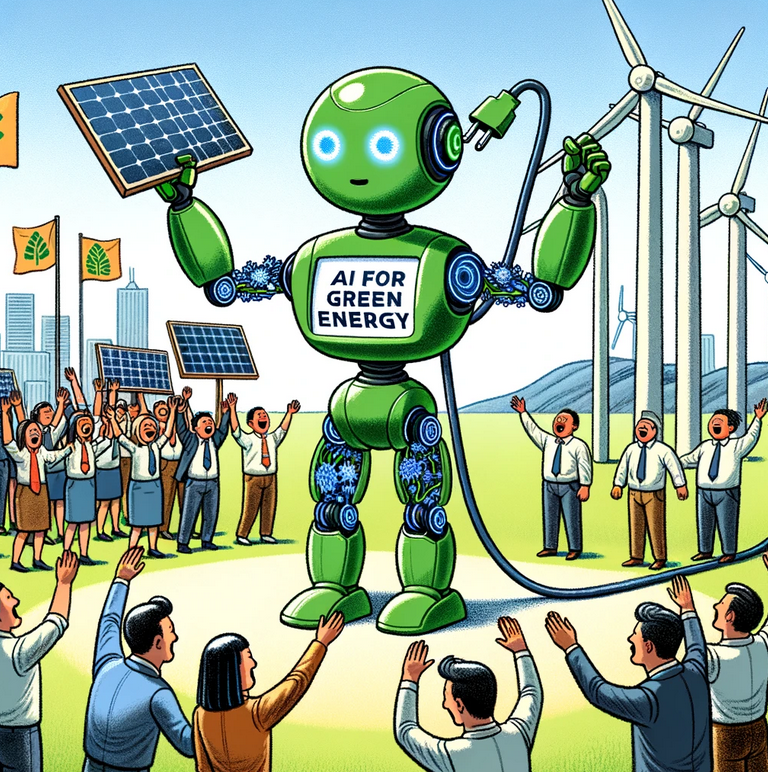(MSFT), (GOOGL), (AMZN), (INTC), (AMD), (GE), (NEE), (BEP), (FSLR), (GCTAF)
In today’s technological renaissance, artificial intelligence (AI) is the crown jewel, poised to redefine a myriad of sectors. At the vanguard of this revolution is Microsoft (MSFT), a beacon of innovation, masterfully weaving together the threads of AI and nuclear fusion. These days, the tech giant is tackling head-on one of the most formidable challenges in AI: its voracious appetite for energy.
The proliferation of AI in our daily lives, exemplified by tools like OpenAI's ChatGPT, is leading to an unprecedented surge in energy demand. A study from the University of Washington lays bare the facts: hundreds of millions of queries on ChatGPT can guzzle up to 1 gigawatt-hour a day, equivalent to the energy consumption of 33,000 US households. This burgeoning demand for energy in the AI sector is sounding alarm bells about its long-term sustainability.
Microsoft, with its strategic foresight, is not turning a blind eye to this issue. The company’s partnerships and investments are a testament to its commitment to finding sustainable solutions.
Its collaboration with OpenAI and the power purchase agreement with Helion Energy, which aims to harness nuclear fusion for energy by 2028, are pivotal moves. These are not mere ventures into sustainable energy; they are strategic investments ensuring the longevity and responsibility of AI’s power consumption.
Now, let’s shift our focus to the stock market and the investment opportunities that are unfolding. The tech-heavy Nasdaq (^IXIC) has witnessed a staggering 26% increase year to date, fueled largely by the buzz surrounding AI-related stocks. This underscores the profound impact AI is having on stock market investing. However, as expected, this impressive growth is not without its challenges.
The heart of advanced computing processes, data center electricity usage, has seen substantial growth. From 2010-2018, it increased by about 6%, and in 2022, global data center electricity consumption accounted for approximately 1.3% of global electricity demand.
In real-life terms, this is comparable to the energy consumption of a small city's worth of homes running 24/7.
The shift in data centers from simpler processors (CPUs) to more advanced and energy-intensive graphics processing units (GPUs) is a significant factor in this increased energy demand. GPUs, now the backbone of AI infrastructure, consume 10 to 15 times more power per processing cycle than CPUs.
This creates opportunities for companies like Intel (INTC), investing heavily in AI-compatible processors, and AMD (AMD), known for its high-performance computing and graphics technologies.
This transition, akin to moving from a versatile office worker (CPU) to a specialized assembly line (GPU), is crucial for the development and maintenance of sophisticated AI models but raises serious questions about the sustainability of such rapid growth.
So, what does this all mean for investors? Microsoft’s foray into AI and nuclear energy is a clear signal to investors about the transformative potential of a company that is not just riding the wave of AI but actively shaping its trajectory. Its focus on nuclear fusion shines a spotlight on companies in the energy sector, particularly those involved in nuclear technology and renewable energy.
For example, General Electric (GE) and NextEra Energy (NEE), both with significant investments in nuclear and renewable energy, could see a boost as the industry gains momentum.
With Microsoft's investment in nuclear fusion, companies involved in nuclear energy and related technologies could become more attractive. Brookfield Renewable Partners (BEP) and Orano SA, a company specializing in nuclear fuel cycle products and services, are examples of companies in this sector.
Other tech giants with substantial investments in AI are likely to follow in Microsoft’s footsteps, seeking sustainable energy solutions for their AI operations. Major cloud providers, including Google Cloud (GOOGL), Microsoft Azure, and Amazon Web Services (AMZN), are already playing their part. They are investing heavily in renewable energy to offset their annual electricity consumption and have made net-zero pledges, committing to balance their carbon emissions with carbon removal.
So, companies that provide sustainable technology solutions and services also stand to gain as Microsoft and other tech giants seek to reduce their environmental footprint. First Solar (FSLR), a leading global provider of comprehensive photovoltaic solar systems, and Siemens Gamesa (GCTAF), a major player in the wind energy sector, are examples of companies in this space.
In essence, Microsoft's strategic integration of AI and nuclear energy is creating a domino effect, positively impacting a wide array of sectors and companies. This translates to a diversified portfolio of opportunities, ranging from tech giants and energy companies to startups and businesses focusing on sustainable solutions.
The future is unfolding fast, and the investment landscape is ripe with possibilities for those ready to seize them. Don’t get left behind.


